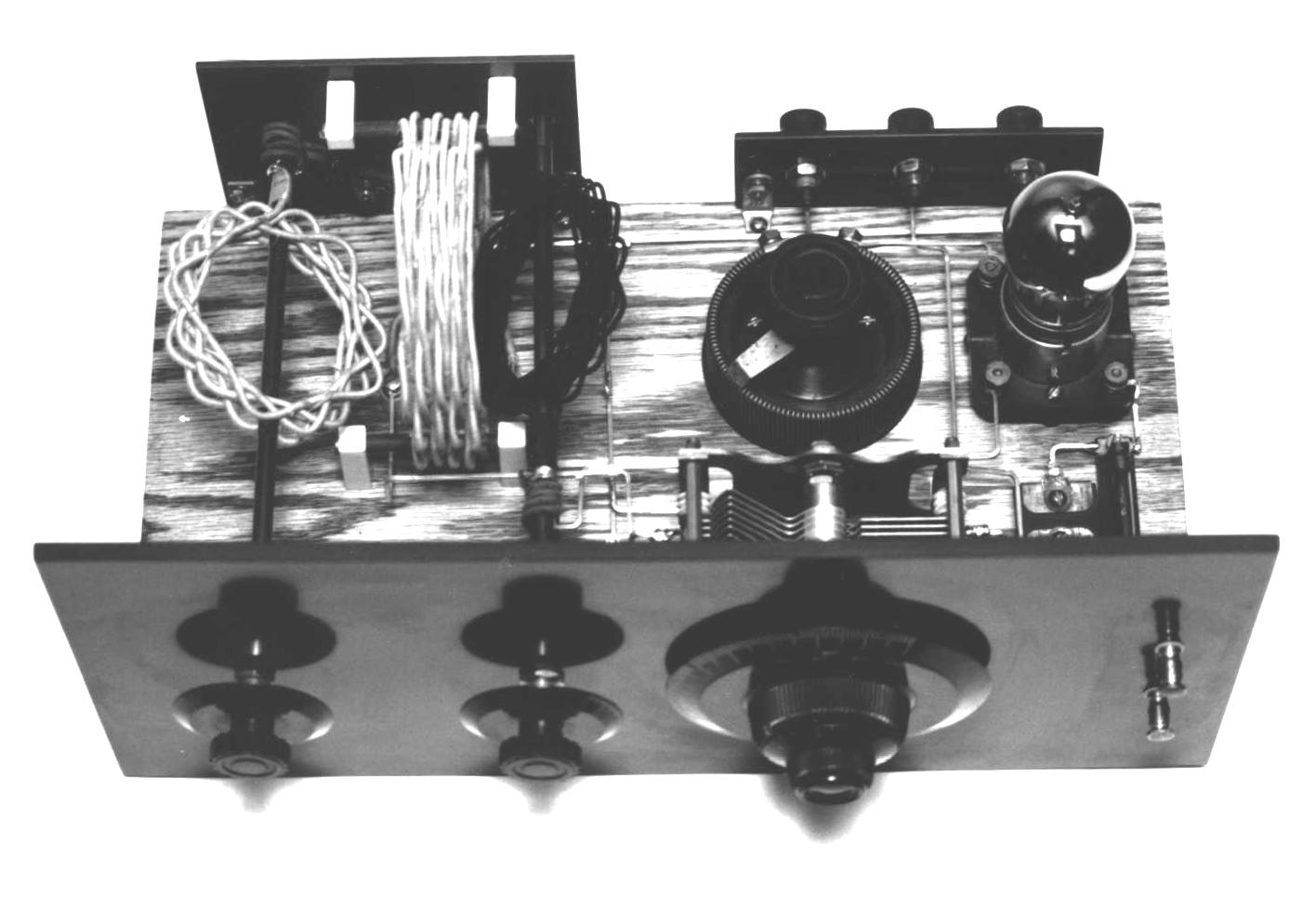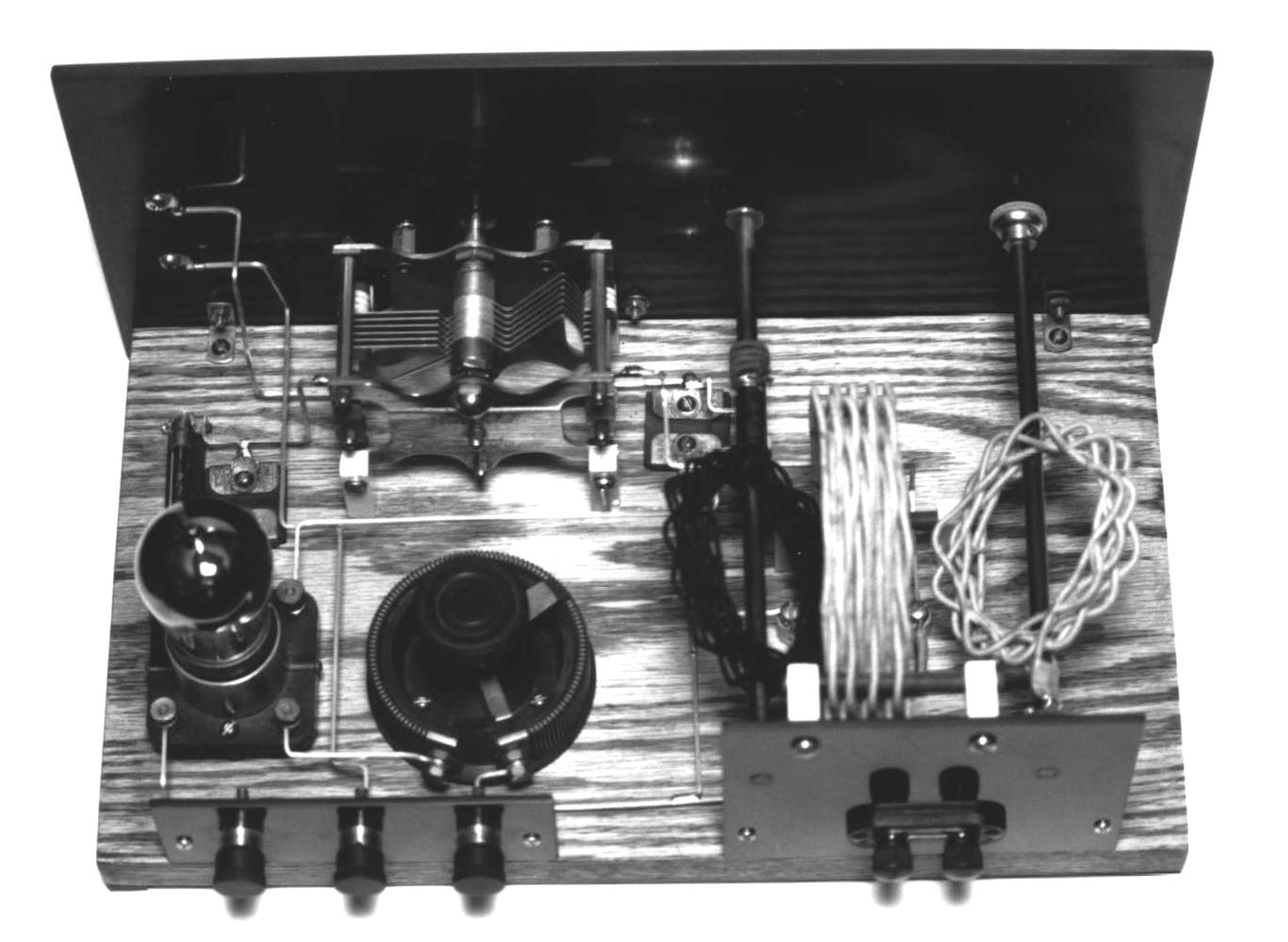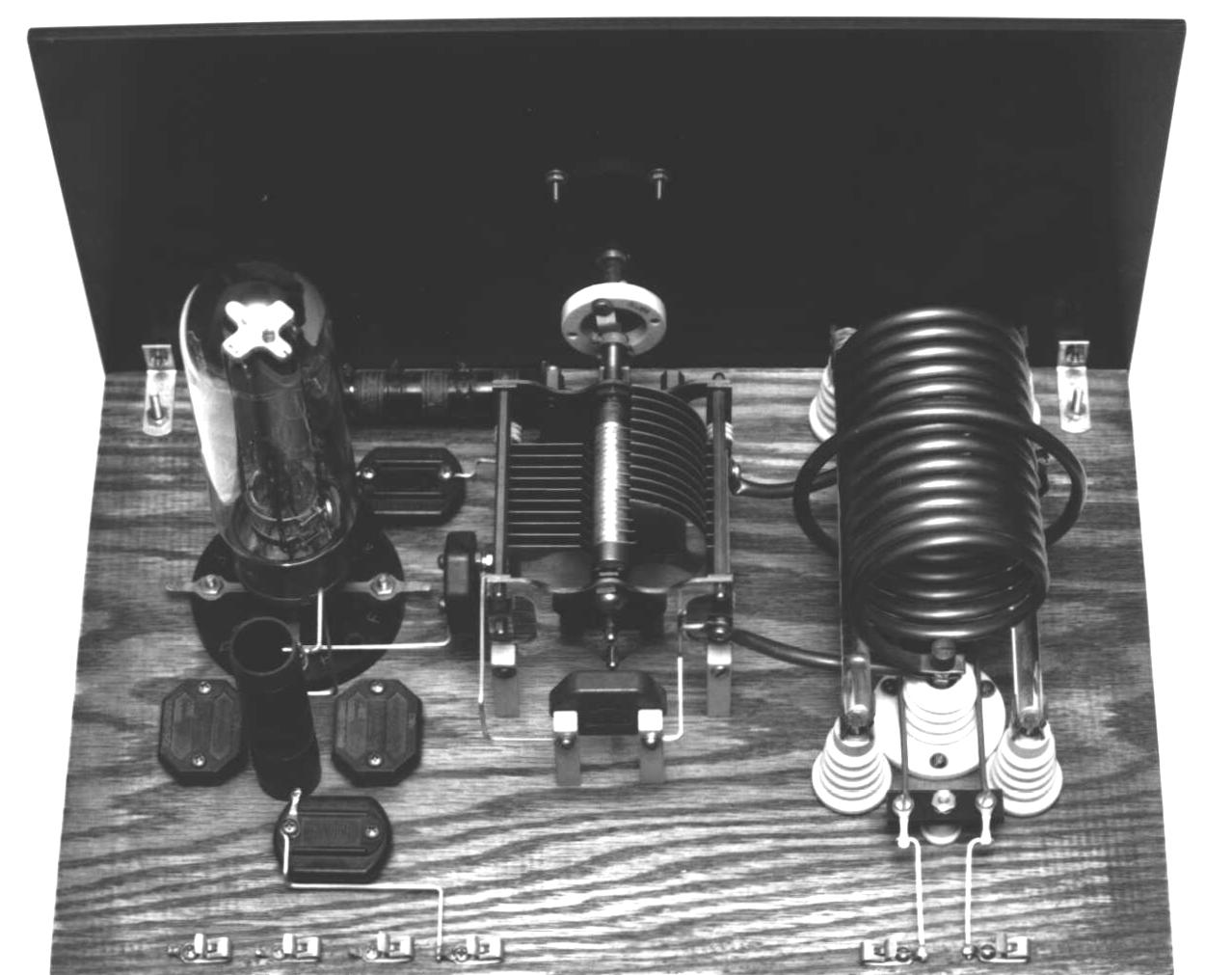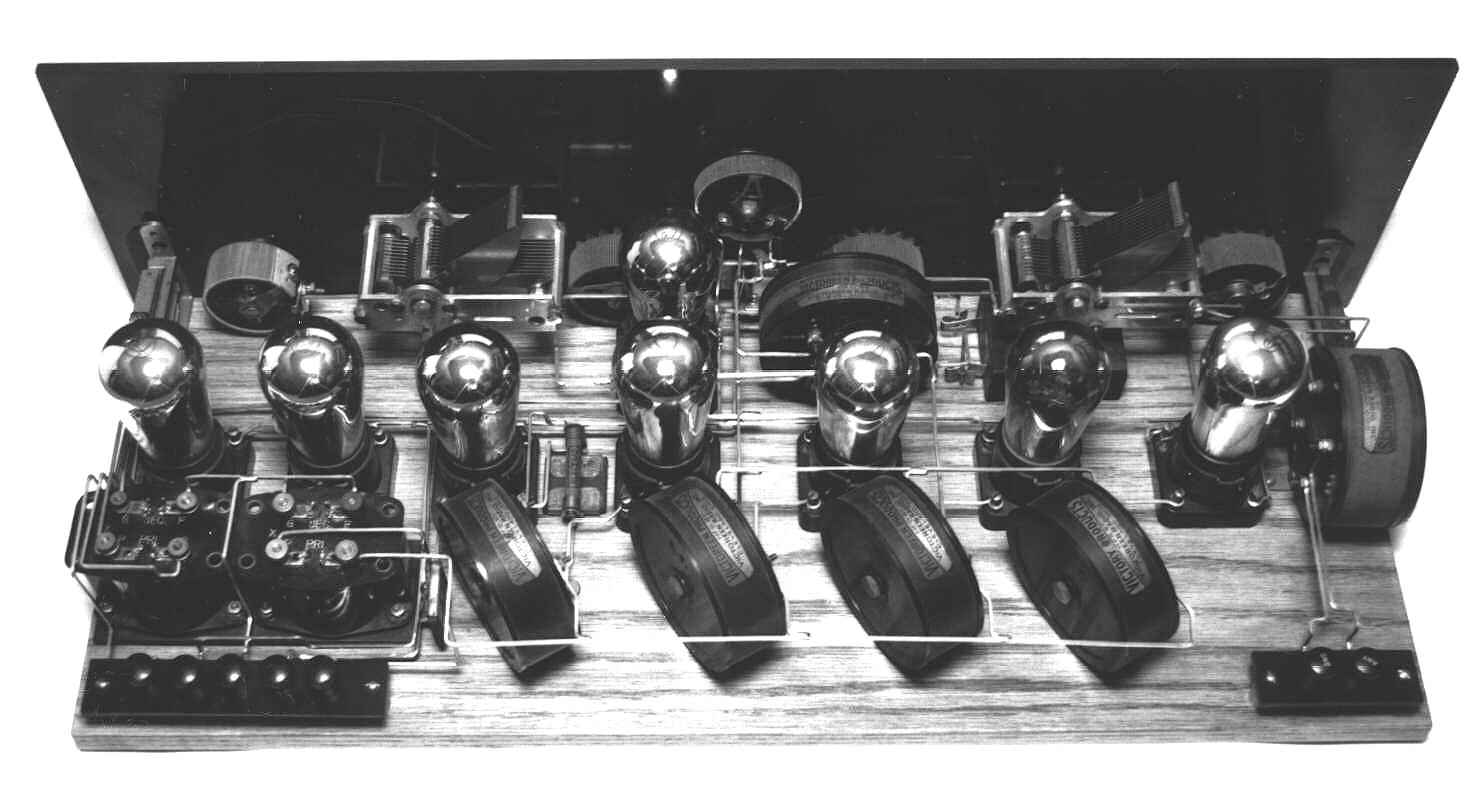nu6JV 1924
I always wanted to construct a "state-of-the-art" amateur radio station of the type that was used in 1924 when the use of "shortwave" was just beginning. The low loss regenerative receiver and the "loose coupled" hartley oscillator transmitter were taken from QST magazine articles. The broadcast receiver was one of the most modern designs of the day.
 The 1BGF Tuner, as it is called, was developed in 1924 by radio amateur 1BGF and the design was featured in QST Magazine of that year. The circuit is a "Armstrong" regenerative design. All components were selected from those available in 1924. The large coils are wound from double cotton covered solid copper wire. They are wound in a basket weave fashion to reduce capacity and allow the receiver to operate in the "short wave" band. This type of construction is known as "low loss".
The 1BGF Tuner, as it is called, was developed in 1924 by radio amateur 1BGF and the design was featured in QST Magazine of that year. The circuit is a "Armstrong" regenerative design. All components were selected from those available in 1924. The large coils are wound from double cotton covered solid copper wire. They are wound in a basket weave fashion to reduce capacity and allow the receiver to operate in the "short wave" band. This type of construction is known as "low loss".
 The potentiometer beside the tube is to set the filament voltage. A grid leak is located in front of the tube. The large knob is a gear reduction tuning type that drives a high quality variable capacitor. The center control adjusts the feedback and the end control adjusts antenna coupling.
The potentiometer beside the tube is to set the filament voltage. A grid leak is located in front of the tube. The large knob is a gear reduction tuning type that drives a high quality variable capacitor. The center control adjusts the feedback and the end control adjusts antenna coupling.

The transmitter is a hartley oscillator circuit with a "50 watter" tube. A 211 or 203A may be used. The coil is made from copper tubing that is supported by solid glass rods to reduce vibration. The low loss capacitor is driven by a "velvet vernier" dial. A single turn link is used to feed the antenna without de-stablizing the circuit.
 The potentiometer beside the tube is to set the filament voltage. A grid leak is located in front of the tube. The large knob is a gear reduction tuning type that drives a high quality variable capacitor. The center control adjusts the feedback and the end control adjusts antenna coupling.
The potentiometer beside the tube is to set the filament voltage. A grid leak is located in front of the tube. The large knob is a gear reduction tuning type that drives a high quality variable capacitor. The center control adjusts the feedback and the end control adjusts antenna coupling.
